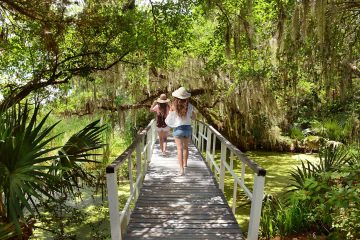With the kickoff of the last quarter of the year, you might be wondering if visiting some of the best national parks in winter is a good idea. And we’re here to tell you that it definitely is! These national parks are some of the best to visit in winter. They let you experience wilderness in its best climate, with awesome wildlife sightings and fewer crowds. Plus, they are wallet-friendly, too!
Before planning, visit the National Park Service website for restrictions and alerts.
Winter in Yellowstone National Park, Wyoming, Montana and Idaho
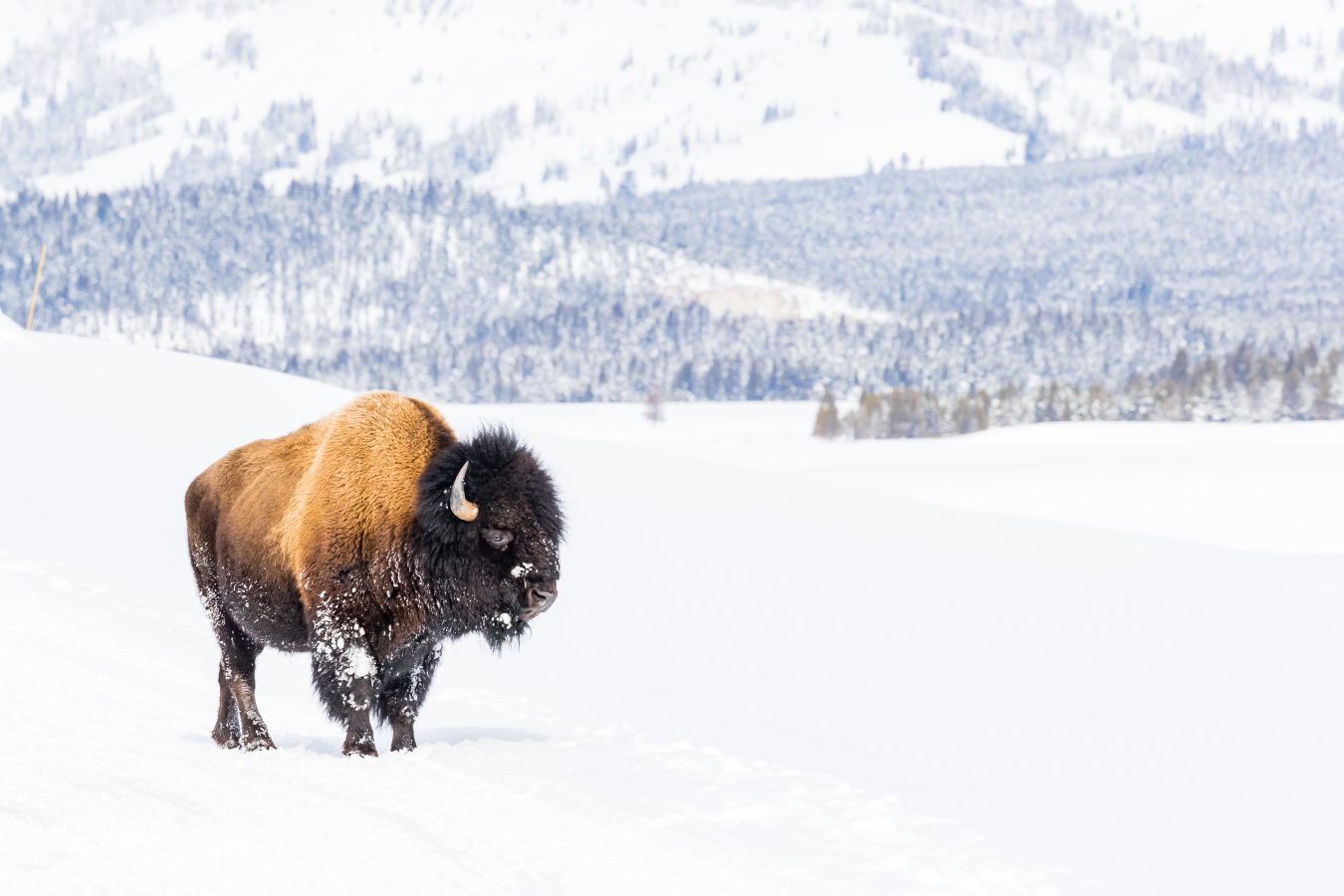
Despite Yellowstone’s internal roads being closed seasonally, Yellowstone National Park has a ton of recreation for winter, making even the most miniature of fun activities thrilling and adventurous. This gigantic landmass, which can consume Rhode Island and Delaware together, is home to an estimated 300 species of birds, 16 types of fish, and 67 species of mammals, including grizzly bears, wolves, lynx, fox, moose, and elks. Yellowstone is a perfect place to encounter wildlife, which you will, and marvel at its beauty. It is a nature and wildlife enthusiast’s paradise.
Winter in the oldest US National Park delivers a more intimate experience with mesmerizing snowy landscapes and frosty animals. Take a guided tour ride on a snowmobile or a snowcouch to visit Old Faithful, the Grand Canyon of Yellowstone, and other popular destinations, and encounter wildlife on your way.
The mystical geyser basins, bubbling mud pots, roaring fumaroles (also known as steam vents) and hot springs will soothe you, bringing your body, soul, and mind together in harmony, letting you intrinsically reconnect with nature.
Preparation for winter starts in early November by closing most park roads, so based on your travel plans, check out the road status map before you depart!
Search flights to Salt Lake City →
Fun fact! Under Yellowstone National Park lies an active super-volcano which, if it erupted, could cause global disaster. The last blast from the supergiant roughly 70,000 years ago covered one-third of the earth into darkness. Not to worry, there is no ongoing activity that indicates anything will happen soon.
Winter in Grand Canyon National Park, Arizona
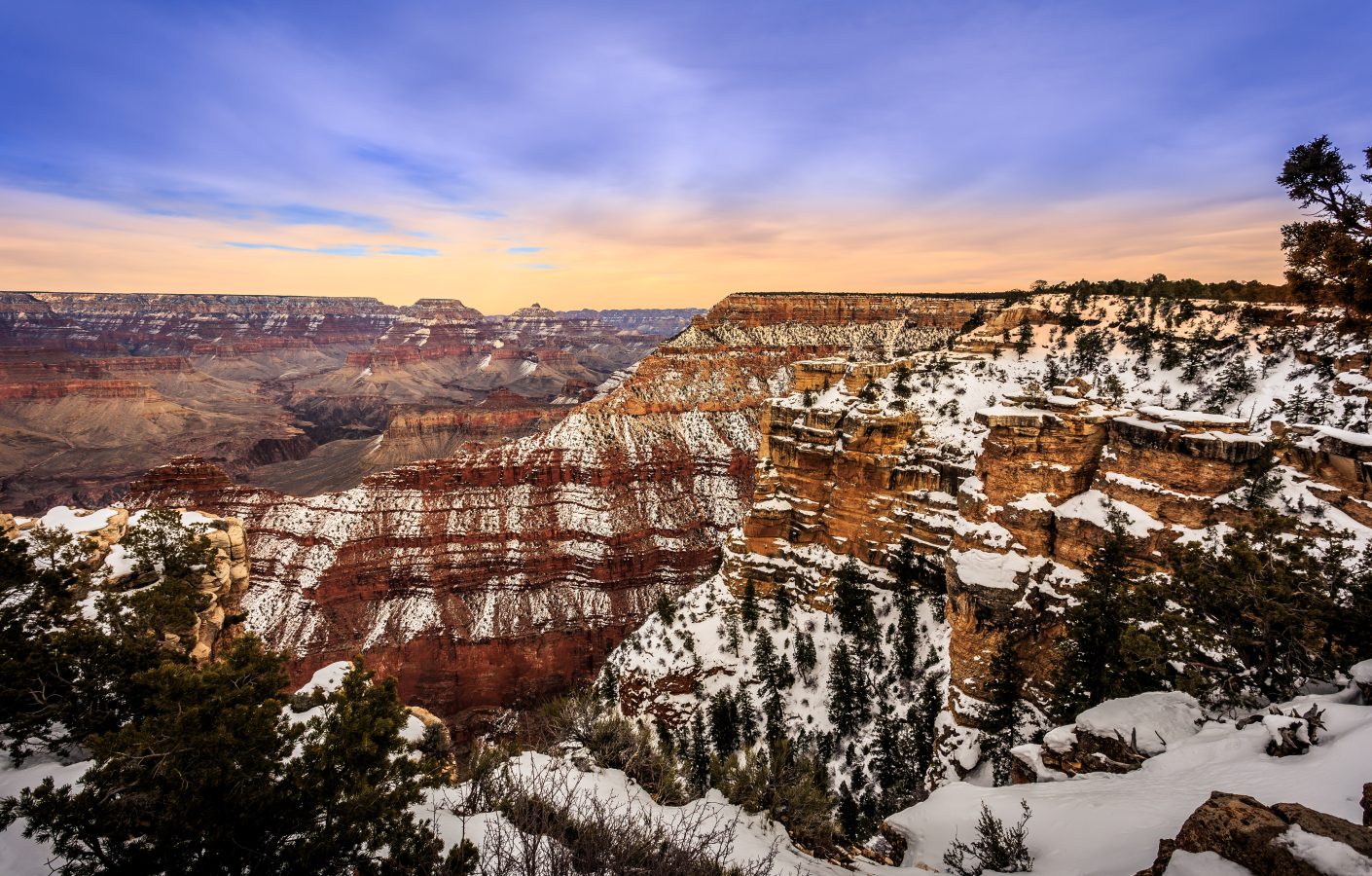
Get some air in the Grand Canyon, which encompasses 1.2 million acres, providing a landmass with the cleanest air in the United States. Explore this historical place and dwell in the history of its origin, which started forming even before the dinosaurs ruled our planet.
Only 10 percent of the total visits per year happen in winter, making your experience less crowded, less congested and peaceful. What is the point of traveling for peace when you don’t find it? Scenic winter storms steal away all the colors from the surface and fill it with inches of white snow, making it a perfect hike along the South Rim of the canyon, which is open throughout the year. Shorter days fill the canvas with soft and beautiful light tints creating a romantic sight to witness with your loved ones. Winter campings are available on the South Rim at Mather Campground and Trailer Village RV Campground, so make sure you arrive early, as they are open on a first-come-first-serve basis.
The deeper you venture into the heart of the canyon, the warmer it gets as temperatures reach up to 60 degrees Fahrenheit (around 15 degrees Celsius) on the canyon floor during a winter day. If you’re lucky, you will get a peek into wildlife like deer trailing through crisp white snow or bald eagles gliding above. So, make sure to keep an eye on the sky!
Fun fact! There might be traces of an ancient Tibetan or Egyptian civilization in an underground tunnel in the canyon, allegedly reported by The Arizona Gazette in 1909. The report was denied, but some suspect it to be a government cover-up. Furthermore, the fact that there are an estimated 1,000 caves and only one is open to the public is suspicious.
Winter in Great Smoky Mountains National Park, North Carolina and Tennessee
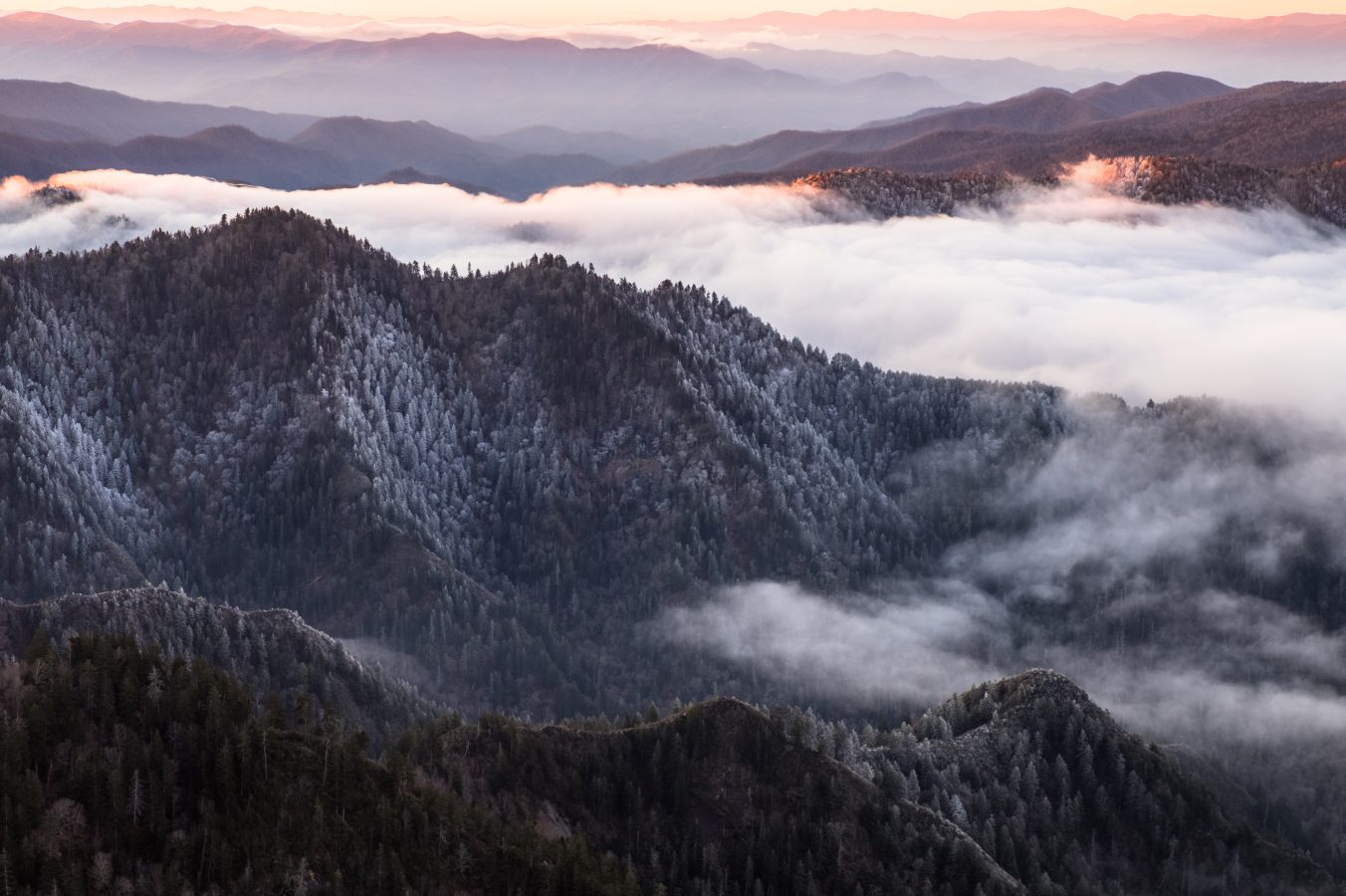
The Great Smoky Mountains National Park is indisputably the most visited national park in the US, with over 14 million visitors every year! The cold months are an ideal time to visit this winter wonderland in solitude. Furthermore, according to the National Parks Service, about half of the winter days see temperatures of 50 degrees (10 degrees Celsius) or higher.
Gatlinburg hosts winter activities such as light displays in Christmas and other festive events. So there are fewer people and you can see all the spectacles with no masses. The mountain peaks, trails and trees are painted white with fresh snow, making it a fairytale dream come true. The deciduous trees decide to shrug off their leaves, increasing the chances of wildlife encounters in the forest. Just make sure you check the list of road closures here beforehand. The weather in this park is infamous for drastically changing, and sometimes the temperature is not cold enough to create snow, causing rain instead. So be sure to carry rain gear for such situations.
There are countless activities to plan in winter — hiking, skiing, skating, snowboarding, and sightseeing. Hiking is one of the spotlights of the Great Smoky Mountains, which can lead you to stunning sceneries, frozen waterfalls, and impressive vantage points of the snow-crowned mountains.
Fun fact! Do you know how the Great Smoky Mountains National Park got its name? Yes, the mesmerizing mist that hovers over the peaks is how it got its name. However, it is not smoke! The native plants in the park give off volatile organic compound, or VOC, which when increased in numbers, form a vapor. When released, it scatters blue light, and that is how you witness that unforgettable sight people visit to catch.
Winter in Shenandoah National Park, Virginia
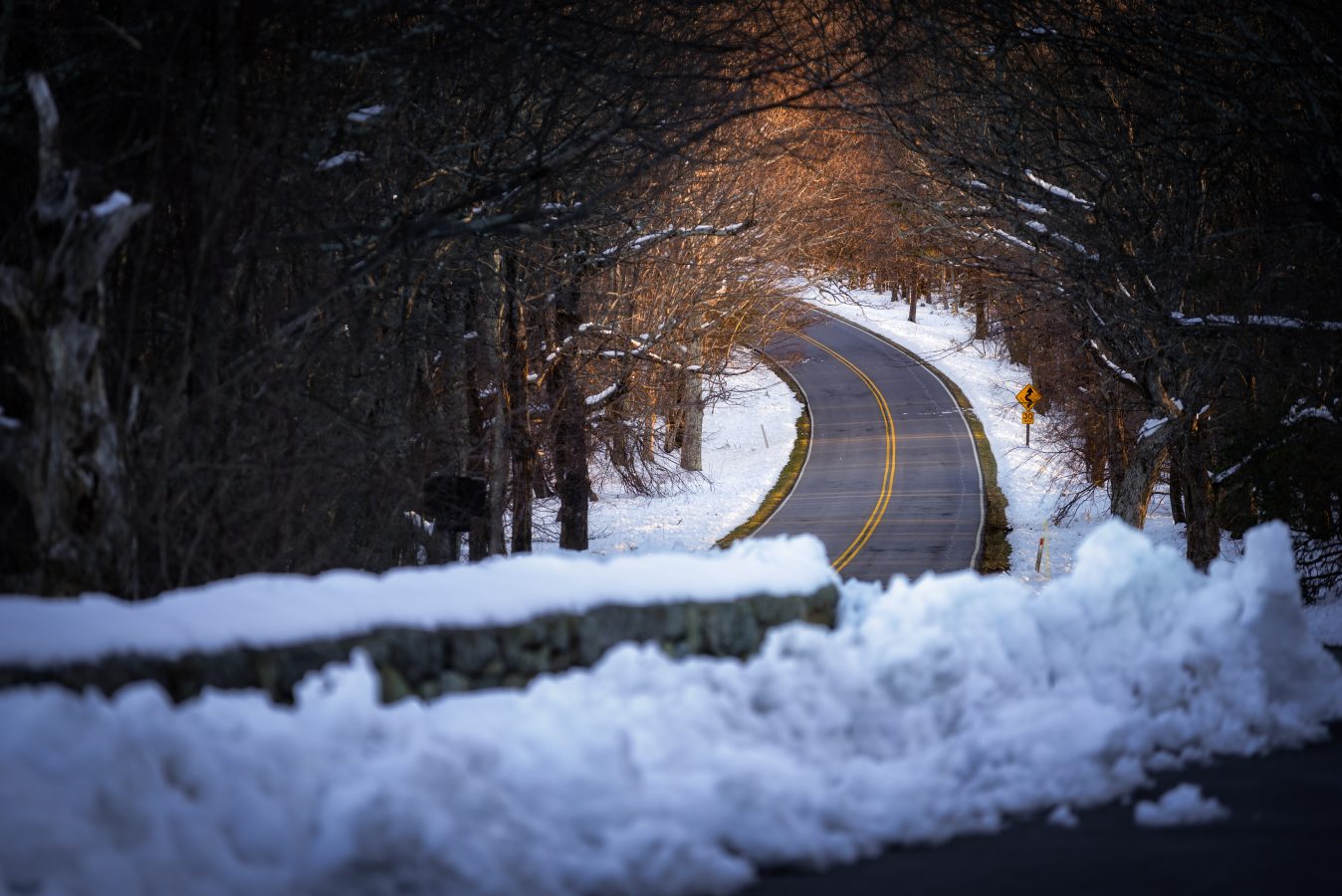
Shenandoah has abundant wildflowers in summer. In the fall months, you can witness hues of oranges and reds during the peak foliage period. And in the winter, this is one of the National Parks that is best to visit for beautiful winter hiking, or a pretty drive to see some snow. Around 75 miles from Washington D.C., there are plenty of trails to uncover, wander and explore. Not a hiker? Take the Skyline Drive for some stunning panoramas from the comfort of your car. The Skyline Drive can be closed, however, due to inclement weather, but in that case, you can always hike, as Shenandoah is always open for hiking!
Search flights to Washington D.C. →
Fun fact! Part of the trails in Shenandoah park makes up around 100 miles of the Appalachian Trail.
No matter which National Parks you visit this winter, you are certain to have a great time! Getting outside in the fresh air is a wonderful way to get rejuvenated, especially after spending a whole semester sitting in lecture halls. Remember to Leave No Trace, to take only pictures, and to respect the nature and other visitors around you.
